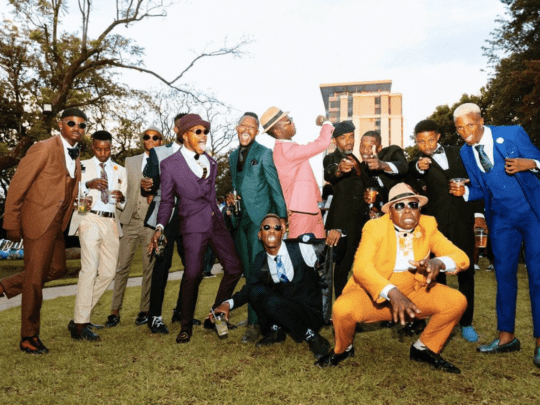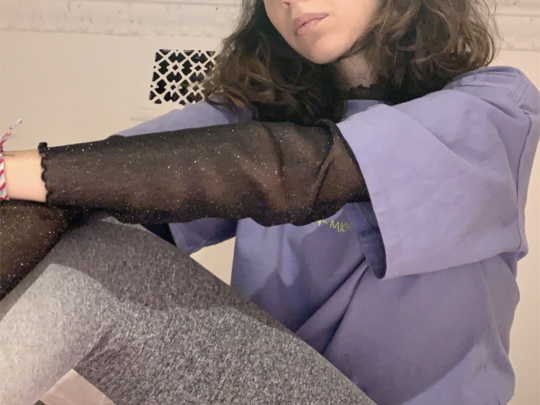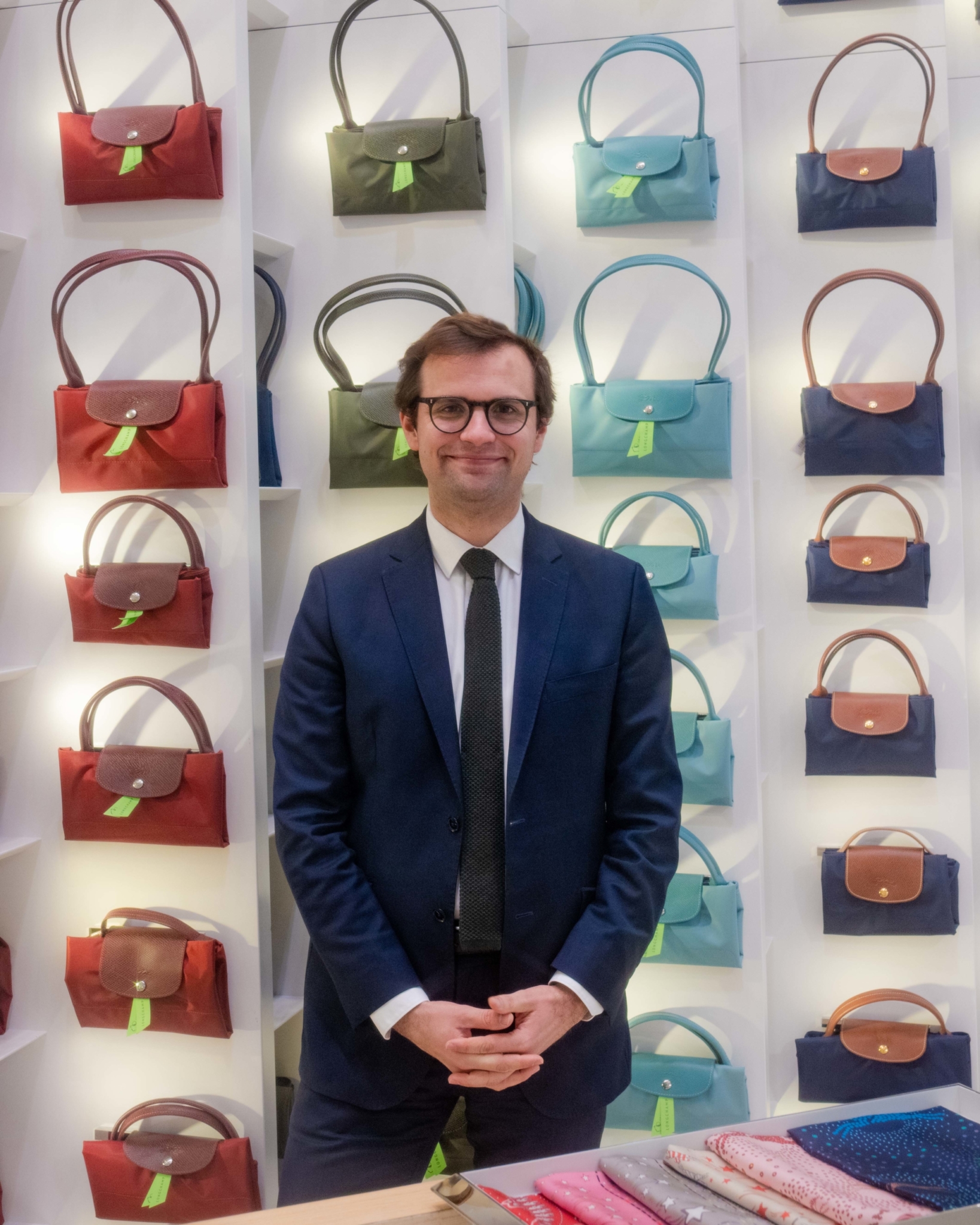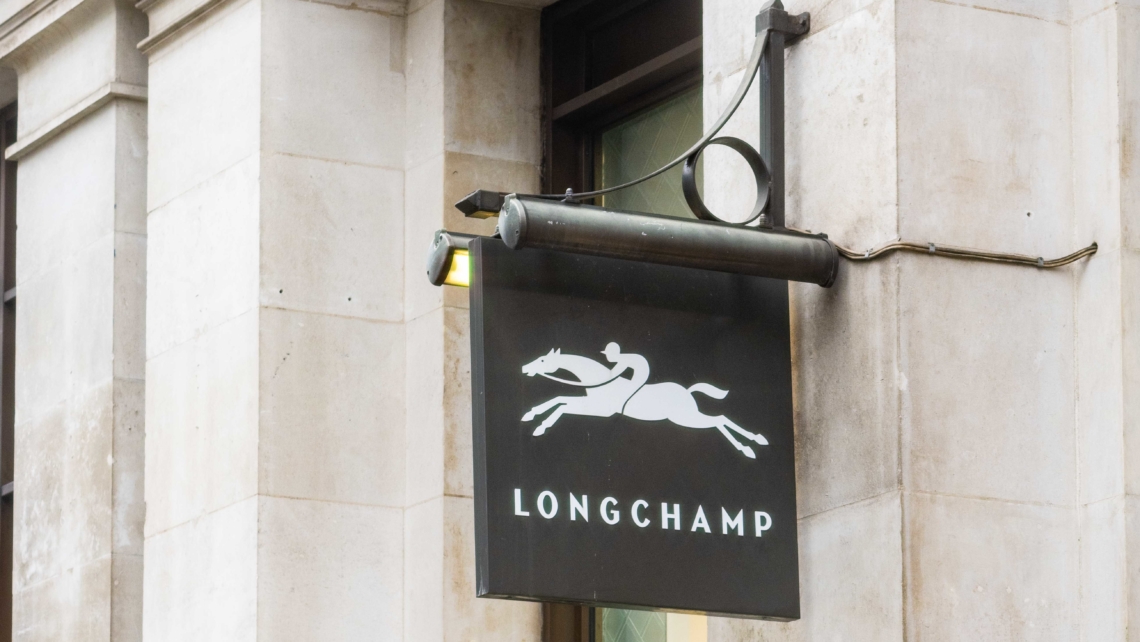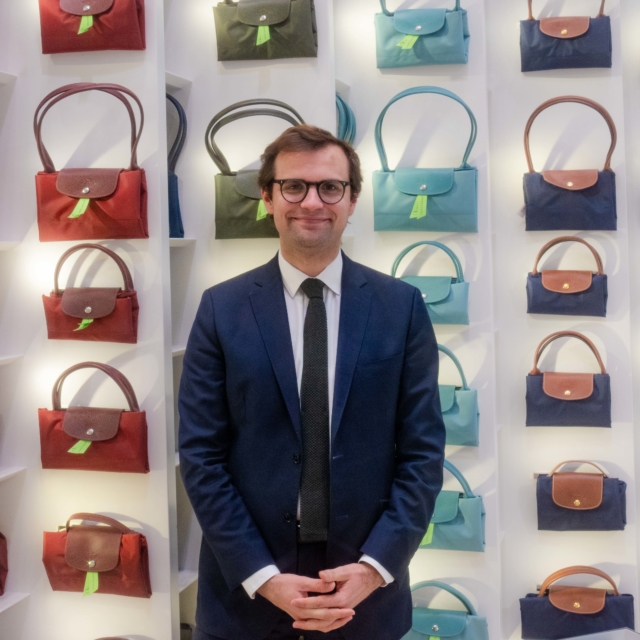His future was cast early. When Hector Cassegrain was still a very young boy, his grandfather Philippe told him that he had two options in life: “You can do leather goods for women – or leather goods for men.”
In truth, he’s ended up working with both. The fast-talking, likeable, enthusiastic great-grandson of the founder of Longchamp, one of France’s best known accessories brands, has taken on the role of UK general manager, a position that has brought him into the family business for the first time. Still only 29, he’s fluent in English, has a Master’s in management behind him as well as half a decade of management experience notched up at French supermarket chain Carrefour and Picnic supermarket in The Netherlands.
Back in 1948, great-grandfather Jean Cassegrain started producing the world’s first leather-covered pipes and then expanded into small leather goods, travel accessories and handbags, creating the platform for the global brand Longchamp is today, a business valued at around 1.3 billion euros.
But the new generation Cassegrain prefers to play down the scale of the business. “We’re still a small family-managed company,” he insists, as if he’s talking about some corner shop. He says this while we are standing in the three-floor Longchamp flagship store, global prime retail estate on London’s Regent Street, one of more than 300 stores around the world. “Well, I think we’re much smaller than other French giants,” he laughs, referencing the likes of LVMH.
It’s remarkable in the 2020s to find a fashion brand with a decades-long heritage that is still privately owned by the founding family. The advantage of this, he explains, is that the business can take a long-term view, untroubled by outside investors or the pressures of a publicly quoted company. The disadvantages? “You take a little bit longer to make things change. Typically, digital transformation can be very heavy for teams that have been working with us for 30, 40 years. If you’ve never worked with a computer, suddenly working with TikTok feels kind of a big move.”

